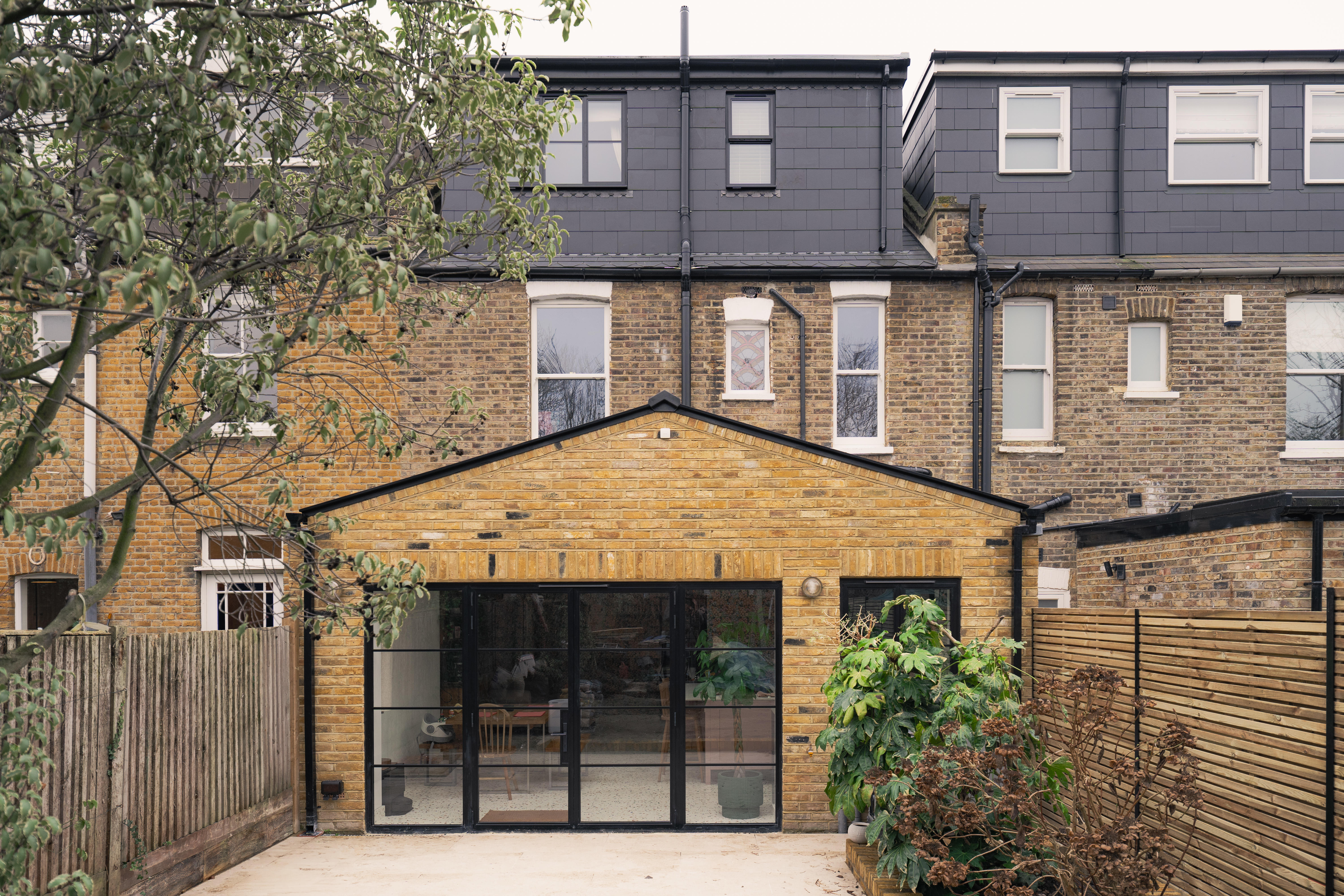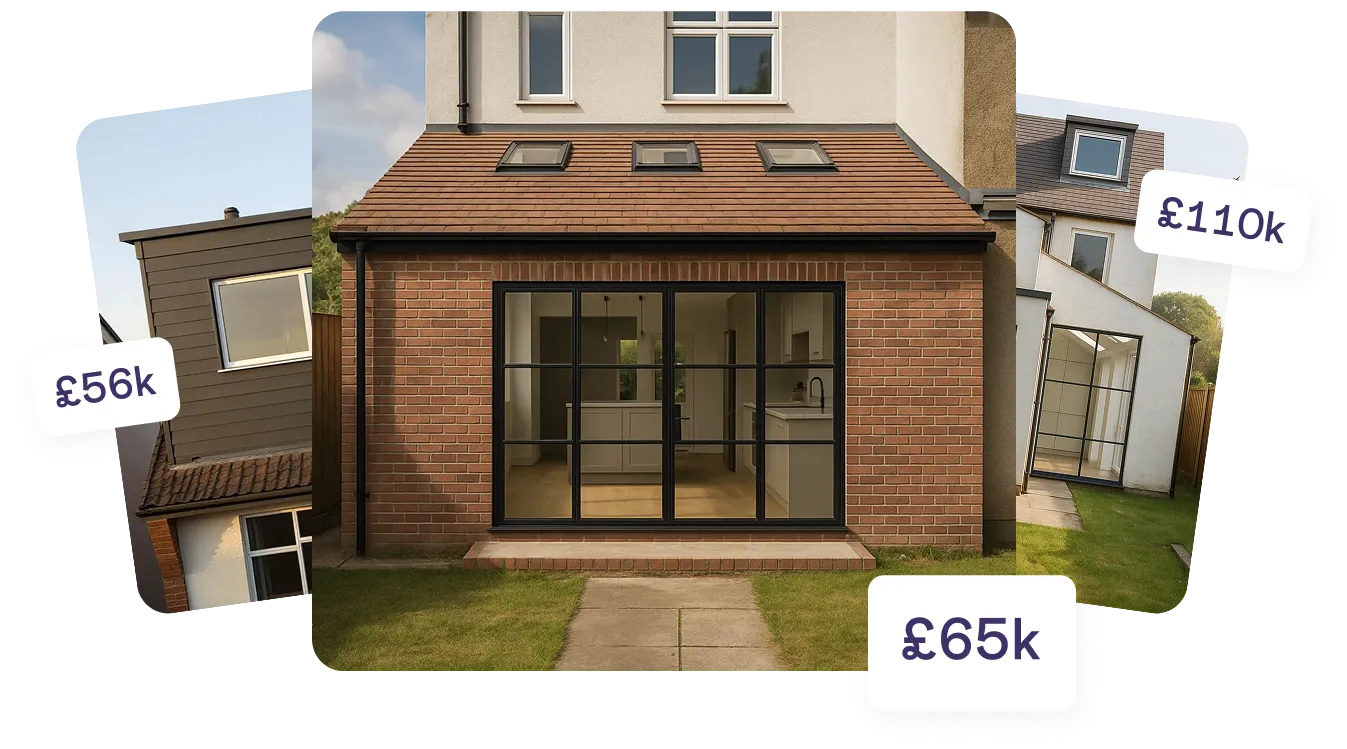Why might you need a lawful development certificate?
If the whole point of a permitted development is to avoid applying for planning permission, why would you go to the hassle of getting a lawful development certificate? “The main reason is for peace of mind,” says Resi’s Senior Planning Consultant, Danielle Price.
“With any permitted development, you always run the risk that your build did in fact need planning permission,” she explains. “You could have misinterpreted the permitted development rules or your house may not have had permitted development rights.” While a good architect will help make permitted development rules clear, there’s always a chance that you might push your design too far, or that the rules could change later down the line. A lawful development certificate gives you clear confirmation that your extension was legitimate at the time, so you can breathe easy.
Another reason it’s a good idea to get a lawful development certificate is so you can prove to future buyers and solicitors that your work was all above board. “Without one, a keen-eyed buyer or solicitor may see that your house has been extended, but if there are no records of a lawful certificate, they may be reluctant to proceed,” says Danielle, adding: “They may not want to take the risk that the works you’ve done don’t meet permitted development rules.” That’s because any breach of the rules would fall on them to fix as the new homeowners.
And one bonus reason in favour of getting a lawful development certificate? “We all know neighbours can be tricky,” says Danielle. “If they complain, you have a document to show them.”
How long does a lawful development certificate last?
A lawful development certificate doesn’t expire, unlike planning permission, where you usually have three years to start work on your approved plans. But there are some things to be mindful of if you’ve got a lawful development certificate for work you’re not going to start for a long time, says Resi’s planning expert, Danielle.
“On rare occasions, the government could make changes to the permitted development rules which mean your project is no longer classed as a permitted development,” explains Danielle. If you’d already built your extension in line with the plans you’d shown the council, the certificate would still cover you. But if you hadn’t yet built it, you would have to make changes to your design to put it in line with the new permitted development rules and then reapply for a lawful development certificate.
The same goes if you decide to make changes to your plans after submitting them for an LDC, before the building starts. “If your plans, taste, or budget changes over time to mean you’re making physical changes to your project, it’s important to revisit the certificate and confirm the changes you’re making are still a permitted development,” says Danielle. For example, she explains: “While you might think you have an approved certificate for a loft, you actually only have a certificate for the exact loft you submitted to the council.”
Resi’s planning expert also advises you to be mindful of changes in your area. “If, for example, you have a lawful certificate approved and waiting to be built, but the council establishes a conservation area including your address, this could remove your permitted development rights and make your certificate invalid,” Danielle explains.
The bottom line? As long as you build your extension exactly in line with what you submitted for your lawful development certificate, and you do it before anything changes with government or council rules, then the certificate will remain valid.

When applying for a lawful development certificate, you follow a very similar process to applying for planning permission. That means you should provide “a full set of accurate drawings showing the works you’d like to undertake,” says Danielle. It’s a good idea to work with an architect on these, as they need to be “fully scalable accurate existing and proposed plans which show all relevant elevations and floor plans.” If that doesn’t mean a whole lot to you, your architect will be able to show you.
The reason you need to submit proper plans as part of a lawful development certificate application is to avoid risk of your application being dismissed. “If the council cannot say for sure that what you’re proposing constitutes a permitted development, they may refuse it on technical grounds,” says Danielle. So the more detailed your drawings, the better your chance of getting it green lit.
How long does a lawful development certificate application take?
Applying for a lawful development certificate is a very similar process as getting planning permission, which means the timelines are similar, too. First, you should account for a few weeks working with your architect to prepare detailed drawings as evidence of your proposal. If you work with Resi on your designs, we will submit your application for you and keep you updated with progress.
Usually, councils come back to you with a response within 8 weeks of submitting your application, but this can vary between local authorities.
Luckily, it’s unusual for any major delays to hold up the process of getting a lawful development certificate. Like neighbour disputes, for example. “Since extending under permitted development doesn’t technically need approval, neighbours don’t get consulted for a lawful certificate and are not able to object to the application,” explains planner Danielle.
As a planning certificate of lawful development isn’t a mandatory requirement, you can choose to apply for it after your building work has started or finished. But just be aware that comes with an element of risk. If the council comes back and says your plans don’t fall within a permitted development, you’ll have to apply for planning permission instead (and then you’ll have to keep everything crossed that it gets approved, so you don’t have to make radical changes to your shiny new extension!).

How much does a lawful development certificate cost?
Getting a lawful development certificate is often cheaper than getting planning permission. In England, it costs £264, while in Scotland, it’s £346 and £230 in Wales.
What happens if your application is refused?
If your lawful development certificate is refused, it doesn’t necessarily mean the end of the road for your permitted development. So, how do you move forward with your project? “Your next course of action would depend on the reason for refusal,” says Danielle.
In many cases, you can make tweaks to your application; sometimes small design changes are enough to bring a project in line with permitted development rules. If the issue is that your proposal could never qualify under permitted development, the next step would be applying for full planning permission instead. For that, you’d have to make sure the design meets your council’s extension guidance to boost your chances of approval.
But if you’re confident the council have got it wrong, and your design does fall within the permitted development rules, you can appeal. “Lawful certificate refusals can be appealed to the planning inspectorate,” says Danielle, adding a warning: “Different councils can interpret the rules differently, making it hard to establish a clear answer sometimes.” In rare cases, overturned appeals can set new case law.
A refusal isn’t necessarily final. With expert advice, you’ll know whether to amend, reapply, or appeal, and Resi’s experts can guide you through whichever route makes most sense.
How can you increase your chances of getting your lawful development certificate granted?
A lawful development certificate will be granted if the council is satisfied that your plans meet the permitted development requirements. So the best way to increase your chances of getting it approved is to work with an architect who can design an extension that works for you and that obeys the rules of a permitted development.
“Listen to your architect, keep your design straight forward, do your research in local planning decisions,” says Danielle.
If you want to understand more about whether your project would work as a permitted development, the best first step is to book in a free call with a Resi expert, who can talk you through everything you need to know. Find a time that suits you here.








